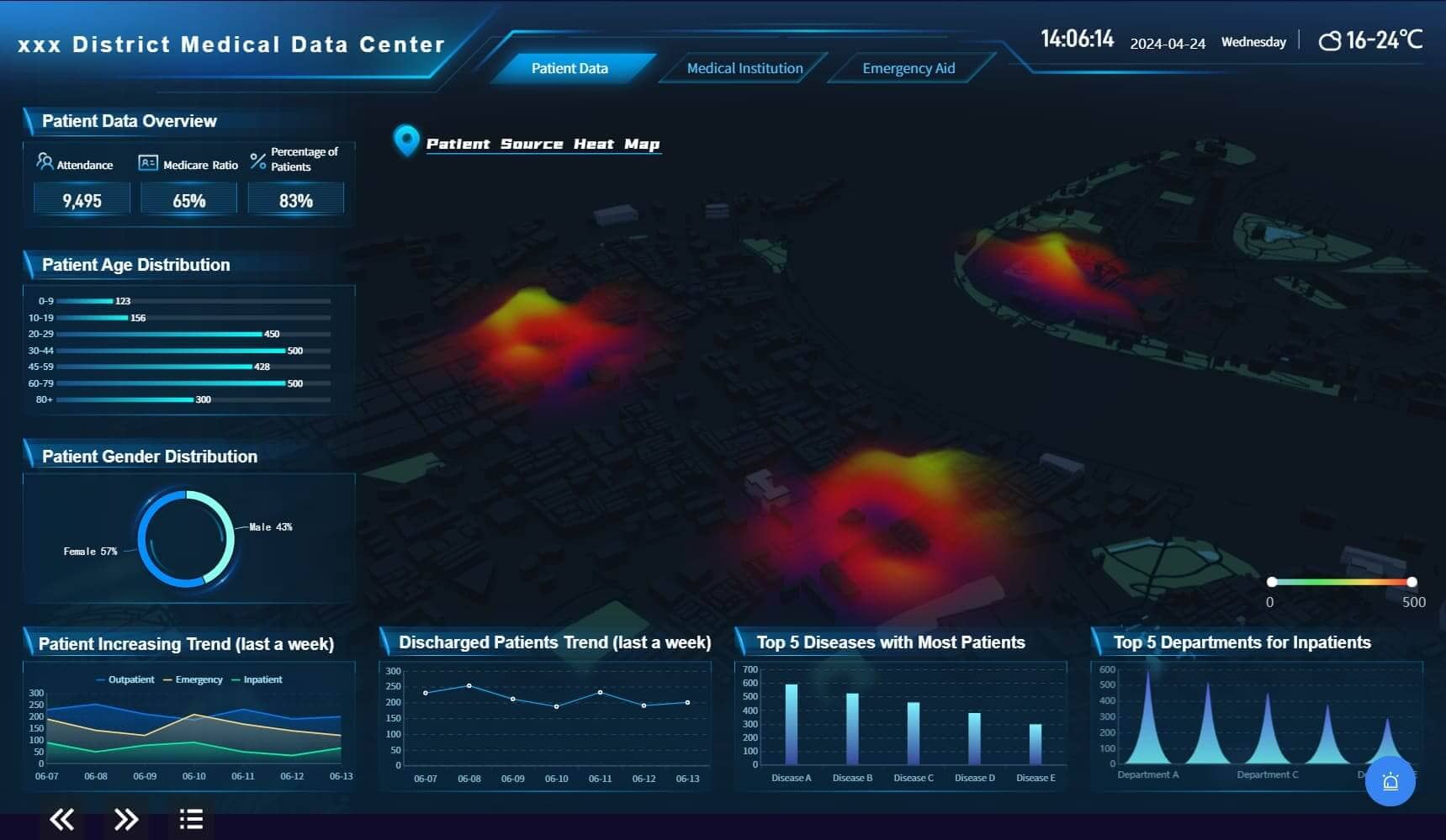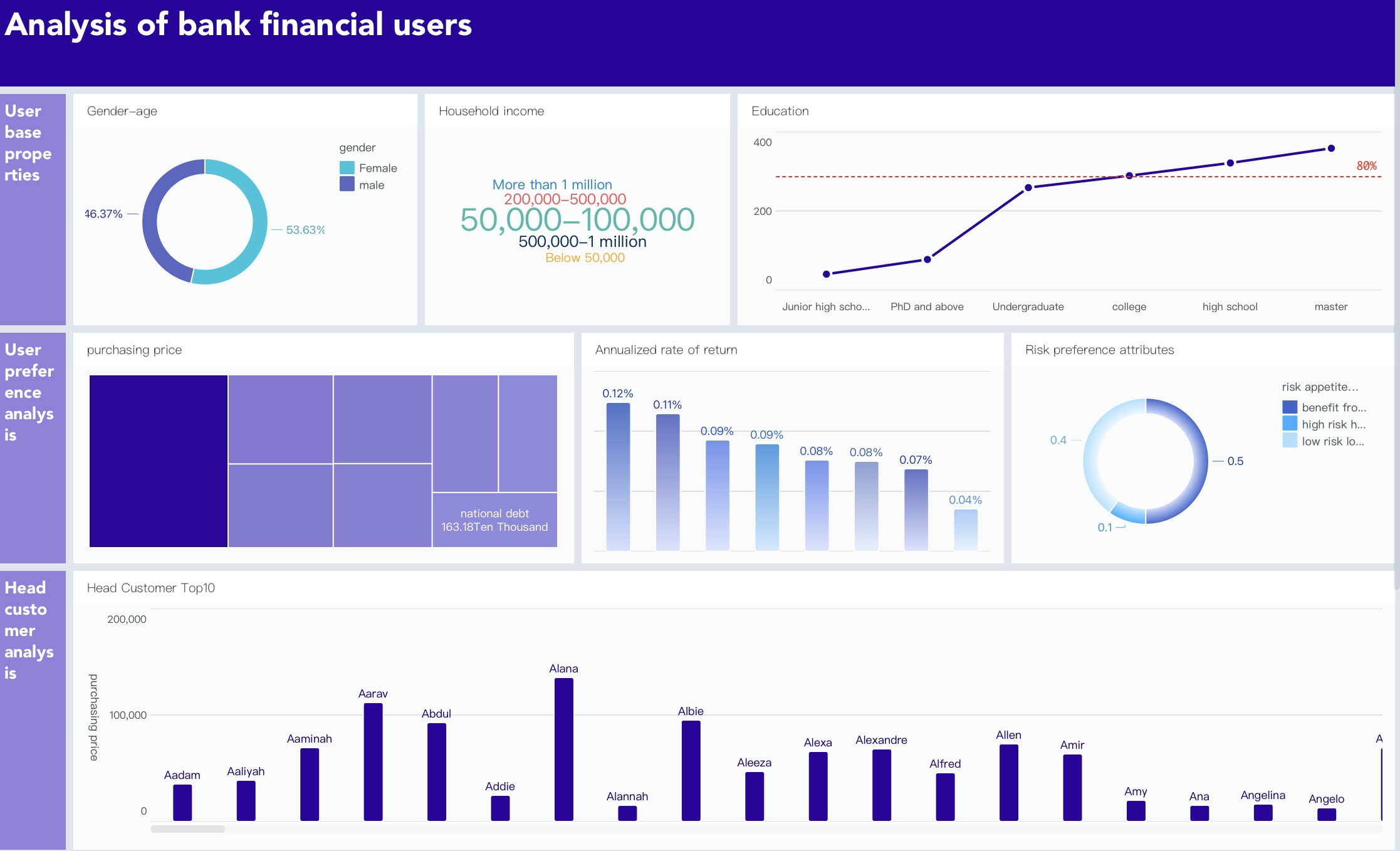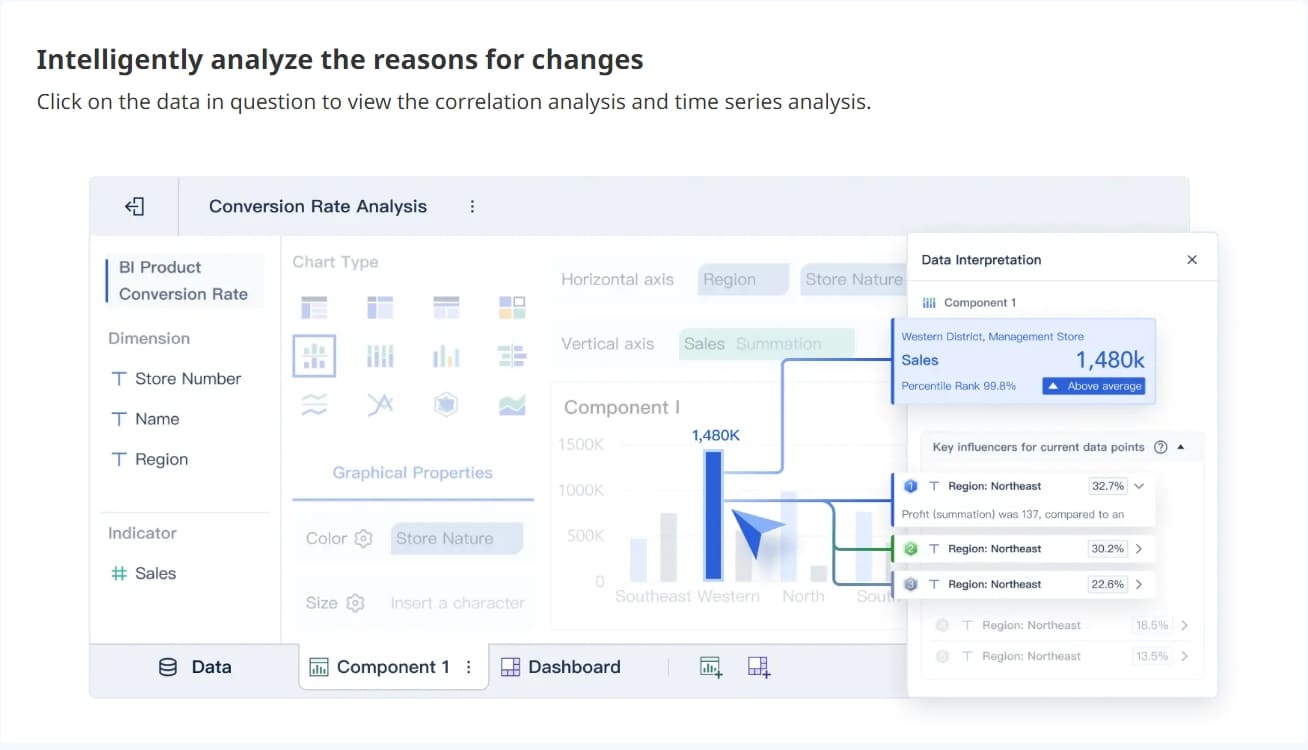

Data workflows play a crucial role in managing and processing data efficiently. They involve a series of steps that transform raw data into valuable insights. Understanding data workflows helps you streamline processes, ensuring accuracy and efficiency. You can leverage tools like FineDataLink, FineReport, and FineBI to enhance your data workflow. These tools offer solutions for data integration, reporting, and business intelligence, making them essential for effective data management. By mastering data workflows, you can unlock the full potential of your data, driving informed decision-making and strategic growth.
Understanding Data Workflow
Definition and Components of Data Workflow
Data workflows consist of a series of steps that guide you from data collection to analysis. They ensure that you manage data efficiently and derive meaningful insights. Let's explore the key components:
Data Collection
You begin with data collection. This step involves gathering raw data from various sources. These sources can include databases, sensors, or user inputs. Effective data collection ensures you have accurate and relevant data for further processing.
Data Processing
Once you collect data, you move to data processing. This stage involves cleaning and transforming the data. You remove any errors or inconsistencies and convert the data into a usable format. Proper data processing is crucial for accurate analysis.
Data Analysis
After processing, you analyze the data. This step allows you to extract valuable insights and make informed decisions. You can use statistical methods, machine learning algorithms, or visualization tools to interpret the data effectively.
Types of Data Workflow
Different types of data workflows cater to various needs. Understanding these types helps you choose the right approach for your data management tasks.
Batch Processing
Batch processing involves handling large volumes of data at once. You process data in groups or batches, often at scheduled intervals. This method suits tasks that do not require immediate results, such as end-of-day reports.
Real-time Processing
Real-time processing allows you to handle data instantly as it arrives. You process data continuously, enabling immediate insights and actions. This type is ideal for applications that demand quick responses, like monitoring systems or financial transactions.
Hybrid Processing
Hybrid processing combines batch and real-time methods. You can process some data in real-time while handling others in batches. This approach offers flexibility, allowing you to balance speed and efficiency based on your specific needs.
The Importance of Data Workflow
Enhancing Efficiency of Data Workflow
Efficient data workflows can transform how you manage and process data. By focusing on efficiency, you can save time and resources, allowing you to focus on more strategic tasks.
Streamlining Processes
Streamlining processes involves simplifying and optimizing each step in your data workflow. You can achieve this by eliminating unnecessary steps and automating repetitive tasks. Tools like FineDataLink can help automate data integration, reducing manual effort. When you streamline processes, you increase productivity and reduce the time it takes to derive insights from your data.
Reducing Redundancies
Redundancies in data workflows can lead to wasted resources and confusion. By identifying and removing duplicate processes or data, you can ensure that your workflow operates smoothly. This not only saves time but also reduces the risk of errors. You can use data integration platforms to consolidate data from multiple sources, ensuring a single source of truth.
Improving Accuracy of Data Workflow
Accuracy is crucial in data workflows. Accurate data leads to reliable insights and informed decision-making.
Minimizing Errors
Errors in data can lead to incorrect conclusions and poor decisions. To minimize errors, you should implement data validation and cleaning processes. These steps help identify and correct inaccuracies before they affect your analysis. Automation tools can assist in maintaining consistency and accuracy throughout your workflow.
Ensuring Data Integrity
Data integrity ensures that your data remains accurate and consistent over its lifecycle. You can maintain data integrity by implementing robust data governance practices. This includes setting clear guidelines for data entry, storage, and processing. By ensuring data integrity, you build trust in your data and the insights it provides.
Implementing Data Workflow
Implementing an effective data workflow requires the right tools and best practices. By focusing on these areas, you can enhance your data management processes and achieve better results.
Tools and Technologies of Data Workflow
To implement a successful data workflow, you need to leverage the right tools and technologies. These tools help automate processes, integrate data, and ensure smooth operations.
Workflow automation software
Workflow automation software plays a crucial role in streamlining your data processes. It allows you to automate repetitive tasks, reducing manual effort and minimizing errors. By using automation software, you can ensure that your data flows seamlessly from one stage to another. This not only saves time but also increases efficiency, allowing you to focus on more strategic tasks.
Data integration platforms like FineDataLink
Data integration platforms, such as FineDataLink, are essential for managing data from multiple sources. FineDataLink simplifies complex data integration tasks with its low-code approach. It enables real-time data synchronization and advanced ETL & ELT data development. By using FineDataLink, you can consolidate data from various sources, ensuring a unified dataset for analysis. This platform enhances efficiency and accuracy, making it a valuable tool for any data workflow.

Best Practices of Data Workflow
Implementing best practices in your data workflow ensures that you achieve optimal results. These practices help you define clear objectives and maintain the quality of your data processes.
Defining Clear Objectives
Defining clear objectives is the first step in creating an effective data workflow. You need to identify what you want to achieve with your data processes. Clear objectives guide your workflow design and help you focus on the most important tasks. By setting specific goals, you can measure your progress and make necessary adjustments to improve your workflow.
Regular Monitoring and Evaluation
Regular monitoring and evaluation are crucial for maintaining the effectiveness of your data workflow. You should continuously assess your processes to identify areas for improvement. Monitoring helps you detect any issues early, allowing you to address them before they impact your results. By evaluating your workflow regularly, you can ensure that it remains efficient and aligned with your objectives.
Challenges in Data Workflow
Data workflows can face several challenges that hinder their efficiency and effectiveness. Understanding these obstacles helps you address them proactively, ensuring smooth data management processes.
Common Obstacles of Data Workflow
Data Silos
Encourage departments to integrate their data sources, creating a unified dataset that enhances decision-making.
Inconsistent Data Formats
Implement data transformation processes that convert data into a consistent format before analysis.
Overcoming Challenges of Data Workflow
Implementing Data Governance
Data governance plays a crucial role in overcoming workflow challenges. By establishing clear policies and procedures, you ensure that data remains accurate, consistent, and secure. Develop a data governance framework that outlines roles, responsibilities, and standards for data management. This framework helps you maintain data quality and integrity, reducing errors and enhancing trust in your data.
Ensuring Interoperability
Interoperability ensures that different systems and tools can work together seamlessly. To achieve this, you need to adopt open standards and protocols that facilitate data exchange between systems. Choose tools and platforms that support interoperability, allowing you to integrate data from diverse sources effortlessly. By ensuring interoperability, you create a cohesive data ecosystem that supports efficient workflows and informed decision-making.
Real-world Applications of Data Workflow

Data workflows find applications across various industries, enhancing efficiency and decision-making. By understanding these applications, you can see how data workflows transform operations and drive success.
Industry Use Cases
Healthcare
In healthcare, data workflows streamline patient care and administrative processes. You can use them to manage patient records, ensuring accurate and up-to-date information. Data workflows also facilitate the integration of data from different sources, such as lab results and imaging reports. This integration provides a comprehensive view of patient health, aiding in diagnosis and treatment planning. Additionally, data workflows support research by organizing and analyzing large datasets, leading to medical advancements.

Medical Dashboard by FineReport
Finance
The finance industry relies heavily on data workflows for risk management and regulatory compliance. You can automate data collection and processing, reducing manual errors and ensuring timely reporting. Data workflows help in analyzing market trends and customer behavior, enabling you to make informed investment decisions. They also enhance fraud detection by monitoring transactions in real-time and identifying suspicious activities. By implementing data workflows, financial institutions improve operational efficiency and customer service.

Financial Dashboard by FineReport
Success Stories
Case Study 1
A leading healthcare provider implemented a data workflow system to manage patient data more effectively. By integrating data from various departments with FineReport, they created a unified patient record system. This system improved communication among healthcare professionals, leading to better patient outcomes. The provider also used data workflows to analyze treatment effectiveness, resulting in more personalized care plans. As a result, patient satisfaction increased, and operational costs decreased.
<iframe
frameborder="0"
allowfullscreen="true"
style="display: block; width: 100%; height: 400px; visibility: visible;"
src="https://endemo.finereport.com/webroot/decision/view/duchamp?viewlet=hospital2.0%252FFanruan%2BIntelligent%2BMedicine.fvs&ref_t=design&ref_c=e8d541db-cfa9-4f33-9dc7-677d8d1fbc87&page_number=1"
></iframe>
Case Study 2
A global financial firm adopted data workflows to enhance their risk management processes by FineReport. They automated data collection from multiple sources, ensuring accurate and timely information. The firm used data workflows to analyze market trends and predict potential risks. This proactive approach allowed them to mitigate risks before they impacted the business. Additionally, the firm improved compliance with regulatory requirements by automating reporting processes. These improvements led to increased investor confidence and business growth.
<iframe
frameborder="0"
allowfullscreen="true"
style="display: block; width: 100%; height: 400px; visibility: visible;"
src="https://endemo.finereport.com/webroot/decision/view/duchamp?viewlet=fvs%252FFinancial%2BManagement%2BSystem.fvs&ref_t=design&ref_c=e8d541db-cfa9-4f33-9dc7-677d8d1fbc87&page_number=1"
></iframe>
Future Trends in Data Workflow

Emerging Technologies of Data Workflow
The landscape of data workflows is rapidly evolving, driven by technological advancements. You can leverage these emerging technologies to enhance your data processes and gain a competitive edge.
Artificial Intelligence
Artificial Intelligence (AI) is transforming data workflows by automating complex tasks and providing deeper insights. You can use AI to analyze large datasets quickly, identifying patterns and trends that might be missed by human analysis. AI algorithms can also predict future outcomes, helping you make proactive decisions. By integrating AI into your data workflow, you enhance efficiency and accuracy, allowing you to focus on strategic initiatives.
Machine Learning
Machine Learning (ML) is another powerful tool in modern data workflows. It enables systems to learn from data and improve over time without explicit programming. You can apply ML to automate data processing tasks, such as classification and clustering. This automation reduces manual effort and increases the speed of data analysis. Additionally, ML models can provide personalized recommendations and insights, enhancing decision-making processes. By adopting ML, you can unlock new opportunities for innovation and growth.
Evolving Practices of Data Workflow
As technology advances, data workflow practices are also evolving. You can adopt these practices to stay ahead in the data-driven world.
Data-driven Decision Making
Data-driven decision making is becoming a standard practice in organizations. You can use data to guide your decisions, ensuring they are based on facts rather than intuition. By analyzing data, you gain insights into customer behavior, market trends, and operational performance. These insights help you make informed choices that drive business success. Embracing data-driven decision making allows you to respond quickly to changes and seize new opportunities.
Increased Automation
Automation is revolutionizing data workflows by reducing manual intervention and increasing efficiency. You can automate repetitive tasks, such as data entry and processing, freeing up time for more strategic activities. Automation tools ensure consistency and accuracy, minimizing errors in your data processes. By implementing automation, you streamline your workflow and enhance productivity. This shift towards increased automation empowers you to focus on innovation and growth, positioning your organization for future success.
Strategies for Optimizing Data Workflow
Optimizing your data workflow can significantly enhance efficiency and accuracy. By adopting effective strategies, you can ensure that your data processes remain robust and adaptable to changing needs.
Continuous Improvement
Continuous improvement involves regularly assessing and refining your data workflow. This approach helps you identify areas for enhancement and implement changes that drive better results.
Feedback Loops
Feedback loops play a crucial role in continuous improvement. They allow you to gather insights from various stages of your workflow. By collecting feedback from team members and stakeholders, you can identify bottlenecks and inefficiencies. Use this information to make informed adjustments, ensuring that your workflow remains efficient and effective.
Iterative Processes
Iterative processes involve making incremental changes to your workflow. Instead of overhauling the entire system, focus on small, manageable improvements. Test these changes and evaluate their impact before proceeding further. This approach minimizes risks and ensures that each adjustment contributes positively to your overall workflow.
Leveraging Advanced Analytics with FineBI
Advanced analytics can transform your data workflow by providing deeper insights and more accurate predictions. FineBI offers powerful tools that enable you to harness the full potential of your data.
Predictive Analytics
Predictive analytics allows you to forecast future trends and outcomes based on historical data. With FineBI, you can apply predictive models to your datasets, identifying patterns and trends that inform strategic decisions. This capability helps you anticipate changes and prepare accordingly, giving you a competitive edge.

Prescriptive Analytics
Prescriptive analytics goes a step further by recommending actions based on data analysis. FineBI enables you to explore various scenarios and determine the best course of action. By leveraging prescriptive analytics, you can optimize decision-making processes and achieve desired outcomes more efficiently.

Data workflows are essential for transforming raw data into actionable insights. By implementing effective data workflows, you enhance efficiency and accuracy in your data management processes. You can leverage tools like FineDataLink, FineReport, and FineBI to streamline your workflows and drive informed decision-making. As technology evolves, staying updated with emerging trends will keep you ahead in the data-driven world. Embrace these advancements to unlock the full potential of your data and propel your organization towards strategic growth.
FAQ
A data workflow refers to the sequence of processes involved in managing and processing data. It starts from data collection and ends with data analysis and reporting. This structured approach ensures that data is handled efficiently and effectively.
Data workflows matter because they streamline data management processes. They help you organize, process, and analyze data systematically. This leads to more accurate insights and informed decision-making.
Key components include:
Data Collection: Gathering raw data from various sources.
Data Processing: Cleaning and transforming data into a usable format.
Data Analysis: Extracting insights and making decisions based on the processed data.
Data workflows enhance efficiency by automating repetitive tasks and reducing manual effort. They streamline processes, minimize errors, and ensure that data flows smoothly from one stage to another.
Common challenges include data silos, inconsistent data formats, and lack of automation. Addressing these issues requires promoting data sharing, standardizing formats, and implementing automation tools.
You can overcome challenges by implementing data governance, ensuring interoperability, and using tools like FineDataLink for data integration. These strategies help maintain data quality and streamline workflows.
Automation reduces manual intervention, increases efficiency, and minimizes errors. It allows you to focus on strategic tasks by handling routine processes automatically.
AI and ML automate complex tasks and provide deeper insights. They enhance data analysis by identifying patterns and predicting outcomes, leading to more informed decision-making.
Continue Reading About Data Workflow
Mastering Excel Dashboard in 6 Easy Steps
Master Excel dashboards in 6 steps: from data prep to interactive elements, enhance decision-making with improved visualization.
Lewis
Oct 14, 2024
2025 Best Data Integration Solutions and Selection Guide
Explore top data integration solutions for 2025, enhancing data management and operational efficiency with leading platforms like Fivetran and Talend.
Howard
Dec 19, 2024
2025's Best Data Validation Tools: Top 7 Picks
Explore the top 7 data validation tools of 2025, featuring key features, benefits, user experiences, and pricing to ensure accurate and reliable data.
Howard
Aug 09, 2024
2025 Data Pipeline Examples: Learn & Master with Ease!
Unlock 2025’s Data Pipeline Examples! Discover how they automate data flow, boost quality, and deliver real-time insights for smarter business decisions.
Howard
Feb 24, 2025
Best Data Integration Platforms to Use in 2025
Explore the best data integration platforms for 2025, including cloud-based, on-premises, and hybrid solutions. Learn about key features, benefits, and top players.
Howard
Jun 20, 2024
Best Data Integration Vendors for Seamless Workflows
Discover the top 20 data integration vendors of 2025 for seamless workflows. Compare tools like Talend, AWS Glue, and Fivetran to optimize your data processes.
Howard
Jan 22, 2025





